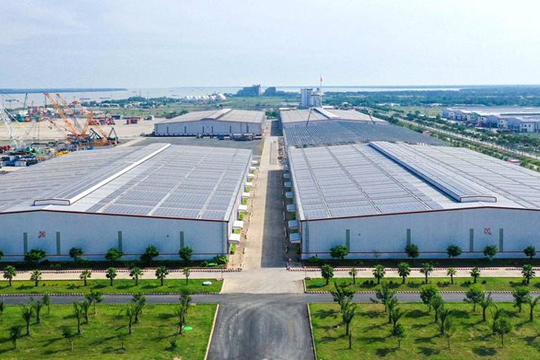
The cargo forecast for 2012 comes against a backdrop of economic uncertainty, job stagnation and debt crises…
Last year was a record period for the industry, with more than $21.7 billion in net-profit generated. Many airlines benefited from healthy operating surpluses and successful year-end results. Yet almost on cue, the financial position of the industry took a dip in 2011. Data from the International Air Transport Association outlined second-quarter net profits totaling $1.8 billion, which is almost a 60 percent, year-over-year, drop.
There’s no doubt air cargo plays a fundamental part in total air transport activity. According to Boeing, cargo revenue represents an average of 15 percent of total airline revenue, with some airlines earning more than half their revenue from this source.
Last year, the most important markets – North America, Europe and Asia-Pacific – have seen a general decline. It is critical to appreciate that it is the change in the three major markets that has the most significance in the overall trend. In terms of freight-tonnes carried, these three regions account for 86.1 percent of total air cargo market share.
Many world events contributed to the general slide 2011’s cargo activity: particularly the Japanese earthquake and tsunami in March 2011 – this has reduced air-cargo shipments and disrupted infrastructure in Japan; the continued crisis in Europe economies and during the summer months, a collapse in stock markets worldwide took place, with all the major indices showing a sharp downturn; throughout the summer of 2011, jet fuel hovered around $120per barrel. That is still 80 percent of the peak reached at the height of the economic demand cycle in July 2008 (when it peaked at $148); the political unrest associated with the Arab Spring, the constraining influence of the situation lin Libya, and other factors, seem to have created a supply-side uncertainty.
The air cargo trend for the early 2011 has been so generally downward that the year-end figure is expected to only represent a growth over 2010’s numbers of about 0.19 percent. However, 2012 will benefit from a more realistic growth pattern of 5.21 percent, and this growth is expected to continue until 2013.
There is a slight increase in the overall rate of growth in 2014 to 6.71 percent, and this then continues slowly rising to the long-term rate of 6.86 percent by 2021.
Overall, the total market for air cargo in 2010 was just more than 200 billion FTK (Freight Tonne Kilometres). Year-end 2011 numbers will show this hardly changed. As the forecast market evolves, it is expected to reach around 255 billion FTKs in 2015 and 271 billion FTKs by 2021.
The generally strong upward trend of the long-term growth rates coincides with the increased use of larger aircraft, such as the Airbus A380 and Boeing 777ER, and the emergence of the fuel-efficient Boeing 787 and Airbus A350 types.
NORTH AMERICA

Package volume declines accelerated during the quarter due to slowing global economic growth. Lags are likely in any U.S stimulus measures, and the outlook for the year must continue from a gloomier perspective.
Perhaps it is because 2010 was such a year of rebound that few shippers quite expected such a rapid cooling off. Most are flabbergasted by the speed of the economic downturn and the general softness of the current market.
Due to the stronger earlier months of 2011, it can be expected that total throughput for the year will be slightly higher than last year; a total annual growth of 2.4 percent is forecast. If there are some real signs by early spring of the next year that the economy has been kick-started, air cargo growth may be strong.
Unfortunately, many of the government’s economic proposals are structural and may take more than just one year to implement. As a result, only an increase of around 3.8 percent can be expected in 2012. The picture in the medium term is one of steadier, more sustainable growth of around 3.5 percent annually until 2021.
THE MIDDLE EAST
The Arab Spring has created a two-speed market in the Middle East and North Africa. Egypt and North African countries are slowly adjusting to a more cautious political arena.
By the absolute contrast, the Gulf carriers – Emirates, Etihad and Qatar – are forcing the pace of growth by aggressively feeding the system with new capacity and offering very competitive cargo rates.
The Gulf carriers clearly are not immune from the global downturn, but with available capacity positions, a rates war seems inevitable. One Asian analyst recently overheard that rates as low as HKG$9 per kilo were being offered for westbound freight via Middle East hubs out of Hong Kong.
As both the slowdown and the impact by changing politics take effect, cargo growth in 2011 is expected to be 4.97 percent.
In 2012, higher growth of 8.85 percent is likely. As the sustained additional fleet capacity feeds into the system, strong growth of around 10.55 percent will be encountered until 2021.
LATIN AMERICA
The slowdown in the North American market has yet to impact the main players in South America, with LAN Airlines reporting strong increases in cargo of 8.6 percent up to July and 9.9 percent in August 2011. Increased capacity, with the introduction of new Boeing 767-300 freighters, is contributing to this growth.
Much of the market from South America is based on seasonal fruit and vegetables, so the impact of the market stagnation in North America may not yet have taken effect. However, some cargo flows involve discretionary items, such as flowers from Colombia and Ecuador, and these may be vulnerable as consumers tighten their belts.
Cargo in Latin America is expected to show some restraint in 2011, rising by 3.38 percent for the year. This growth is likely to improve to 4.16 percent next year and rise by an average of 3.89 percent until 2021.
EUROPE

Lufthansa Cargo saw a drop in revenue-tonne kilometers of 2.2 percent in August, but its year-over-year growth is up 6.8 percent. Similarly, International Airlines Group saw traffic down 2 percent in August and year-over-year 5.5 percent. Air France/ KLM Group saw only a slight fall of 0.2 percent in August; the carrier’s overall year has been similarly flat at 0.6 percent.
Generally speaking, the overall growth in European cargo is a function of the wide economic difficulties currently being encountered in the EU. Europe will end 2011 with a 1.68 percent growth rate.
Going forward, the slow picture is set to improve slightly in 2012. A relative maturity and the impact of emission regulation is likely to hold back airfreight in Europe, so beyond 2015, rates of around 2.5 percent will be maintained until 2021.
ASIA/PACIFIC
The mighty Asia-Pacific market has been hit by the global picture more than most, with a sudden softening of markets all around. Most shippers have been accustomed to very strong growth since 2010 and are generally amazed at the rapidity in the downturn. August, typically a quieter month, saw air cargo at HKIA decline 7.8 percent.
At Incheon International Airport, cargo for August was down 1.1 percent, year-over-year, but down 1.1 percent, but down 4.1 percent on the year so far. Particularly, revealing is the decline in outbound cargo, which saw a drop of 9.1 percent so far in 2011; inbound freight has seen a small raise of 1.1 percent so far this year. At Tokyo Narita, traffic was 15 percent lower in August and is down 13 percent so far in 2011.
Austrlasia which has fared well economically during the recession has seen its currency strengthen leading to almost U.S dollar parity in recent months. Quantas, however, reported air cargo tonnage was down 7.4 percent in the year ending June 2011.
This sharp general market downturn points to a negative forecast for 2011, with a decline of 2.63 percent. It is easy to be blinded by the short-term picture, and it must be recognized that medium-term growth is likely to return. There will be steady growth of around 6.7 percent in 2012, and if external market conditions can remain steady, a sustained growth of around 7 percent by 2021.
AFRICA
African air cargo is vulnerable in the current climate, but there are hot spots – South Africa is currently enjoying post-World Cup economic mini-boom. In December 2010, South Africa became an official member of the BRICS (Brazil-Russia-India-China-South Africa) group.
China has become the top destination for South Africa’s exports since mid-2009 and is also South Africa’s leading source of imports. It has also become the dominant investment partner among emerging partners and uses South Africa as a gateway to other African countries.
Overall, the prospects for Africa in 2011 are weak, with an anticipate drop of 1.24 percent by the end of the year. Strong recovery is likely in 2012, with a more than 5.1 percent jump. This is likely to be sustained in the medium term and positive growth rates of up to 5.3 percent will be maintained until 2021.
By FRANK ELDER
_________________________________
Frank Elder - a specialist of Feather Consulting, an independent research group providing advice to airports, airlines, financial institutions, governmental organizations and other clients throughout the world.









.jpg)
.jpg)

.jpg)

.jpg)


